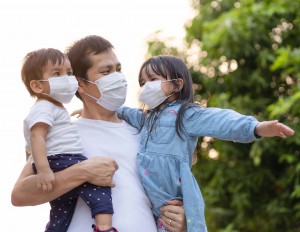
What the Income Assistance Will Do
- Provide families with children age 17 and younger advance payments of their Child Tax Credit (CTC) for tax year 2021.
- Send families installments of their CTC ($3,600 per child ages 6 and younger and $3,000 per child ages 6 to 17) beginning in July for one year.
- Expand the Earned Income Tax Credit (EITC) for more than 17 million adult workers without children.
- Extend the $300-per-week federal unemployment supplement to benefits through Sept. 6.
How New Mexico Will Benefit
- 95% of our children (or 454,000) will benefit from the CTC expansion.
- Of those 454,000 children: 281,000 are Hispanic, 102,000 are white, 61,000 are Native, Black, or multiple races, and 5,000 are Asian.
- The 454,000 includes 244,000 children who were left out of the full $2,000 Child Tax Credit in prior law because their parents earned too little.
- Of those 244,000 children: 165,000 are Hispanic, 33,000 are white, and 42,000 are Native, Black, Asian, or multiple races.
- At least 28,000 U.S.-citizen children, who were left out of previous pandemic relief because of a parent’s immigration status, will benefit from stimulus checks.
- 134,000 workers without children will benefit from the EITC expansion.
- Of those workers: 61,000 are Hispanic, 53,000 are white, and 14,000 are Native, Black, Asian, or multiple races.
Why This is Needed
- 49% of New Mexico adults in households with children have lost employment income since March 2020 (Feb. 3-Mar. 1).
- 36% of New Mexico adults reported having difficulty covering their usual household expenses (Feb. 3-Mar. 1).
- A disproportionate number of job losses since last February are in industries that pay low wages.
- Workers of color have experienced a far slower jobs recovery than have white workers.
What the Food and Housing Assistance Will Do
- Provide the states with $12 billion for food assistance programs like SNAP.
- Extend the 15% SNAP benefit increase through Sept. 30.
- Provide more than $42 billion in assistance for renters and homeowners.
- Provide $5 billion in homelessness assistance.
- Provide $5 billion in utility assistance.
How New Mexico Will Benefit
- New Mexico’s 493,000 SNAP participants will get, on average, a $24 monthly increase.
- Those monthly increases will bring about $12 million to New Mexico.
- 67% of the SNAP increase will go to households with children.
Why This is Needed
- 18% of New Mexico adults reported that children in their household weren’t eating enough because the household couldn’t afford enough (Feb. 3-Mar. 1).
- Households with children, especially Hispanic and Black households, have disproportionately experienced food insecurity.
- 18% of New Mexico renters reported not being caught up on rent (Feb 3-Mar. 1).
- Those struggling to pay rent are disproportionately households with children and people of color, particularly people who are Hispanic or Black.
What the Education and Health Care Assistance Will Do
- Provide $25 billion in emergency funds for child care and $15 billion for the Child Care and Development Block Grant (CCDBG) program to help child care providers, workers, and families.
- Provide $123 billion for school districts to address the pandemic and its effects on student learning.
- Expand the Affordable Care Act’s premium subsidies, reducing the number of uninsured by an estimated 1.3 million.
- Provide $350 billion to help states, localities, tribal governments, and territories cover unexpected costs associated with the pandemic and offset the loss of revenue.
Sources: Multiple reports from the Center on Budget and Policy Priorities; “What the American Rescue Plan Act Means for Children and Families,” Children’s Defense Fund, March 10, 2021; and Population Reference Bureau analysis of U.S. Census Bureau, Household Pulse Survey, 2021
